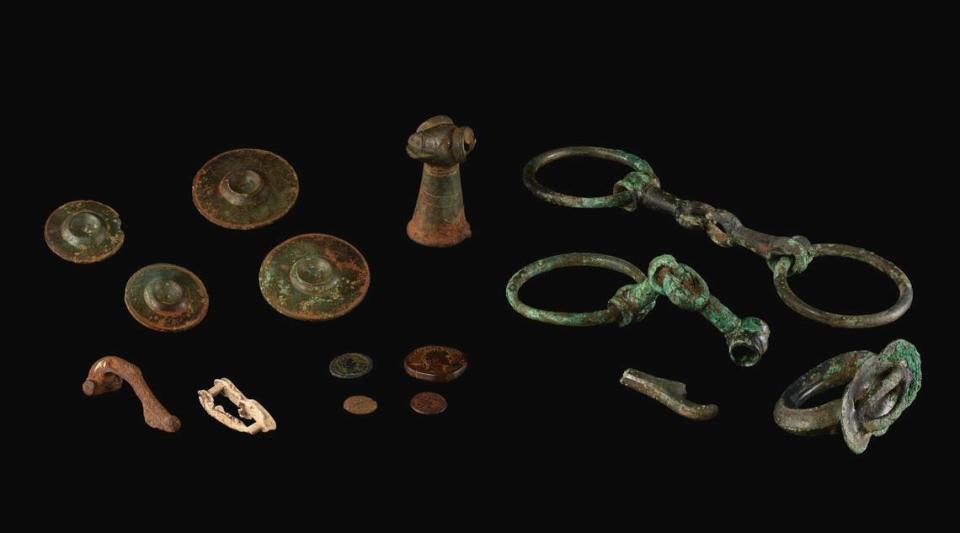Metal detectorist stumbles on ancient Roman treasure trove in Wales, photos show
An ancient worshiper stopped at the edge of a boggy area in modern-day Wales and looked at the spring. Reverently, they deposited some metallic objects and left.
The “unusual” offerings went overlooked for centuries — until a metal detectorist came along.
Ian Porter stumbled upon the ancient treasure trove while using a metal detector to search a field in Anglesey in March 2020, the Amgueddfa Cymru — Museum Wales said in a Feb. 28 news release shared with McClatchy News.
The “unusual” collection included 16 artifacts ranging from about 1,600 years old to about 1,900 years old, archaeologists said. A photo shows the treasures.
The ancient artifacts were identified as “religious offerings” left near an “ancient sacred spring,” the museum said. Today, the spring “emerges in a boggy area of a modern field” in the Llanfair-Mathafarn-Eithaf community.

Uncover more archaeological finds
What are we learning about the past? Here are three of our most eye-catching archaeology stories from the past week.
→ 2,400-year-old underground discovery stumped experts for decades — until now
→ 800-year-old toy unearthed after firehouse demolition. See it
→ Metal detectorist unearths 'one-of-a-kind' gold treasure from 1,400 years ago. See it
The oldest artifacts included some Iron Age chariot fittings, archaeologists said. Ancient Roman cavalry fittings — parts of a horse bridle, a ring used to hold the reins and four discs from a harness — were also found.
“I was so excited when I found these items,” Porter said in the release. “To think that the last person who touched them lived almost two thousand years ago.”
One artifact, a “quirky depiction” of a ram’s head, might have been used on a staff or a vehicle, archaeologists said. A photo shows the ram’s open, almost smiling mouth and its distinct, curling horns.

Another photo shows an ancient Roman ingot found near the spring. The copper ingot weighs about 45 pounds and likely came from a nearby mine, archaeologists said.
An ancient Roman coin from the fourth century was the last known offering left at the “sacred spring” by worshipers, the museum said.

“This culturally mixed artifact group, containing both Iron Age chariot fittings and Roman cavalry fittings, is an important new find for the island,” Adam Gwilt, an expert in prehistory at the museum, said in the release. “It was placed during or in the aftermath of the period of invasion of the island by the Roman army” in the first century AD.
“This group of gifted objects illustrates how watery locations … were seen as significant places for religious ceremony at this time of conflict and change,” Gwilt said.
Oriel Môn, a museum and art gallery in Anglesey, hopes to acquire the artifacts after they undergo an independent valuation.
The Llanfair-Mathafarn-Eithaf community is on Anglesey island and about 200 miles northwest of London.
Stone sarcophagi went unopened for 600 years — until now. See what was found inside
Massive 2,300-year-old stone tomb at park in Italy went overlooked — until now. See it
Man stumbles on ancient Roman artifact — weighing 13,000 pounds — in riverbed. See it


